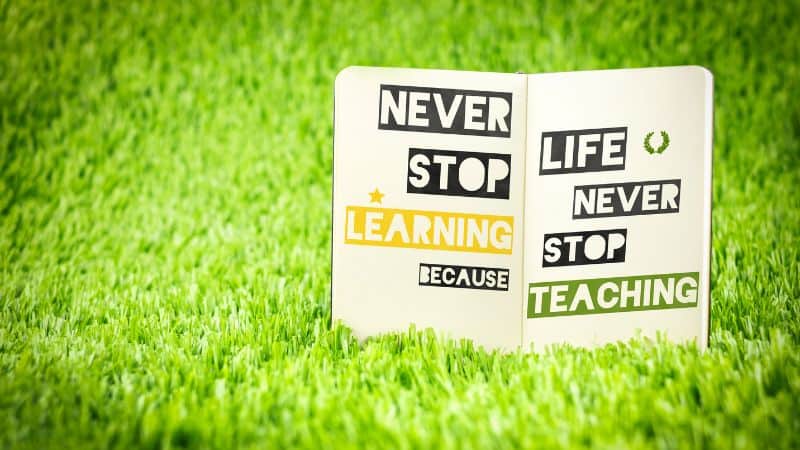Think about the last time you scrolled through your social media feed or flicked through TV channels. How did you feel afterward?
Often, we’re bombarded with a torrent of information – news updates, celebrity gossip, viral videos, and more. It’s like standing in the middle of a bustling city intersection, with sounds and sights coming at us from all directions.
But how much of this content actually helps us, lifts our spirits, or pushes us forward?
Information is abundant but not always beneficial. The challenge isn’t finding content; it’s finding content that matters. Content that leaves us better than it found us.
It’s about sifting through the noise to find the gems that truly enrich our lives. But with so much out there, how do we make the right choice? How do we pick the content that uplifts us and keeps us motivated?
Mindset Shift
This piece isn’t just another list of ‘top ten motivational books or podcasts.’ It’s about a mindset shift. It’s about becoming intentional with what we consume. Every article, every video, every social media post we absorb impacts our thoughts, our moods, and our actions.
So, the question becomes: Are we feeding our minds with the right stuff? Are we choosing content that builds us up and propels us forward?
Understand the profound effect content has on us and master the art of selecting it. Be choosy. Set standards for what we let into our mental space.
Surround yourself with content that is enjoyable, enriching, and empowering.

The Impact of Content on Our Minds
Every piece of content we consume acts like food for our brain. Just like a balanced diet is crucial for our physical health, a balanced content diet is essential for our mental health.
What we read, watch, and listen to has the power to shape our thoughts, influence our emotions, and even change our behaviors.
Consider how a motivational podcast in the morning can set the tone for your entire day. It can instill a sense of purpose and energy. Or how a negative news story can leave you feeling anxious and overwhelmed. This is the tangible impact of content on our minds and moods.
It’s not just about avoiding the bad stuff, though. It’s also about actively seeking the good. Consume content that challenges us, enlightens us, and pushes us towards growth.
But we live in a world where sensationalism often takes center stage. Finding content that is truly uplifting and useful can feel like searching for a needle in a haystack. It’s easy to fall into the trap of mindlessly consuming what’s readily available rather than what’s beneficial.
The key is to be mindful and deliberate in our choices.
When we consciously choose content that aligns with our goals and values, we empower ourselves. We create an environment conducive to growth and positivity.
However, this doesn’t mean we should completely shut ourselves off from the world’s realities.
Find a balance. Stay informed and connected,. But do not let negativity and sensationalism dominate our mental space.
In the following sections, we’ll delve into how to make these choices. Learn how to curate a content diet that feeds our minds with inspiration, knowledge, and positivity. It’s a skill that, once mastered, can transform not just our mindset but our entire approach to life.

Criteria for Selecting Uplifting Content
The first criterion is positivity. This doesn’t mean ignoring reality or avoiding challenges. It means focusing on content that provides solutions, inspires hope, and highlights the good in the world. It’s about content that makes us feel empowered rather than helpless.
The second key element is educational value. Look for content that teaches you something new, broadens your perspective, or helps you develop new skills. This could be a well-researched article, an insightful podcast, or an inspiring documentary. The goal is to learn and grow.
Authenticity is another crucial factor. Seek out content that feels genuine and sincere. Authentic content connects more deeply and has a lasting impact. It could be a personal story, a candid interview, or an honest opinion piece.
Reliability and credibility of the content are also paramount. Consume content from sources that prioritize accuracy and truth. Trusted publications, reputable authors, and expert voices should be your go-to sources.”
Diversity in content is equally important. Engage with content that exposes you to different cultures, opinions, and experiences. This not only enriches your understanding of the world but also fosters empathy and inclusiveness.
Look for content that challenges you – intellectually and emotionally. Content that makes you think, question, and reflect can be incredibly motivating. It pushes you out of your comfort zone and encourages personal growth.
Uplifting content can also be enjoyable and fun. It can be a light-hearted book, a comedy show, or a feel-good movie. The aim is to balance enrichment with enjoyment.”
Use these criteria as a guide. Curate a feed of content that not only keeps you informed and entertained but also uplifts and motivates.
The next section will provide strategies for finding and managing this kind of content effectively.

Strategies for Finding Useful Content
The first step in curating your content is knowing where to look.
Start by identifying sources that consistently provide quality material. These could be niche blogs, respected news outlets, and insightful podcast channels. Make a list of sources that align with your interests and values.
Use content aggregation tools and apps to streamline your search. Platforms like Feedly or Pocket allow you to consolidate articles, videos, and posts from various sources. This helps you keep track of your preferred content.
Customize your social media feeds to work for you. Follow pages and individuals that share uplifting and educational content. Use features like ‘mute’ or ‘unfollow’ for sources that post negative or unhelpful material. Remember, your feed should serve your goals, not distract from them.
Set aside dedicated time for content consumption. Just like you schedule meetings or gym time, allocate specific periods for reading, watching, or listening. This helps prevent mindless scrolling.
Engage with your community for recommendations. Whether it’s a book club, a professional network, or an online forum, members often share valuable resources. Plus, discussing content with others can deepen your understanding and enjoyment.
Don’t forget to periodically review and adjust your sources. What was relevant and uplifting six months ago might not be today. Stay open to discovering new sources and letting go of those that no longer serve your needs.
Consider curating content around specific themes or goals. For example, if you’re working on improving your leadership skills, focus on content in that area. This targeted approach can make your content consumption more purposeful and rewarding.
Embrace a variety of formats. Articles, podcasts, videos, and books, offer different perspectives and learning experiences. Diversifying the format of the content you consume can keep your experience fresh and engaging.”
Finally, remember that finding useful content is an ongoing process. It’s about continually refining your choices to ensure that what you consume adds value to your life.
In the next section, we’ll explore the role of community in enhancing our content consumption experience.
The Role of Community in Content Consumption
Community plays a vital role in enriching our content experience. Engaging with groups, whether online or in person, can open doors to new and diverse content.
Communities often serve as hubs for sharing resources. Want book recommendation, a must-watch documentary, or an insightful article? The collective knowledge of a community can broaden your content choices.
Participating in discussions about content deepens your understanding . It also connects you with like-minded individuals. These interactions can spark new ideas and provide different perspectives. It’s in these conversations that content becomes more than just information – it turns into a tool for connection and growth.
Sharing content can also be a way to contribute to your community. By passing along valuable resources, you help others in their quest for uplifting and informative content. The act of content consumption becomes collaborative. A cycle of learning and sharing benefits everyone involved.
Content Consumption with Action
It’s equally important to balance this with action. The trap of endless consumption without implementation can lead to a sense of stagnation. It’s not just about what you know; it’s about what you do with that knowledge.
Take a proactive approach. Set actionable goals based on the content you consume. For example, if you read an article on productivity techniques, pick one method and try it out in your daily routine. Ensure that the content you consume translates into real-world benefits.
Every piece of content should serve towards personal or professional growth.
Ask yourself: ‘How can I use this information?’ Whether it’s a new skill, a different perspective, or a source of inspiration, make sure there’s a tangible takeaway from what you consume.
Avoid the pitfall of ‘analysis paralysis,’ where you get so caught up in consuming content that you hesitate to take action. Strike a healthy balance – consume, reflect, and then act. This cycle fosters continuous learning and improvement.”
Finally, celebrate your progress. When you successfully implement something you’ve learned, acknowledge and celebrate it. This reinforces the value of your content choices and motivates you to continue this cycle of learning and doing.
Learn, do, and grow.
Consuming content that uplifts and motivates is both personal and ongoing.
The goal isn’t just to fill your mind with information but to enrich your life with knowledge that inspires action. Create a balance that fosters growth, positivity, and productivity.
I encourage you to take these insights and apply them. Start curating your content diet with intention. Seek out sources that challenge and inspire you. Engage with your community and most importantly, take action on what you learn.
Let’s not just be consumers of content. Be active participants in a cycle of learning, doing, and growing.
